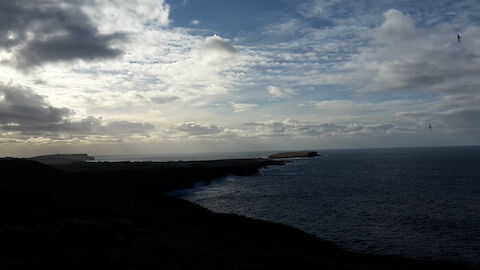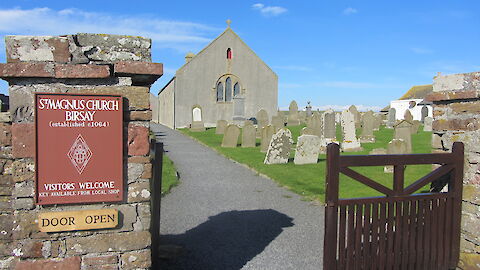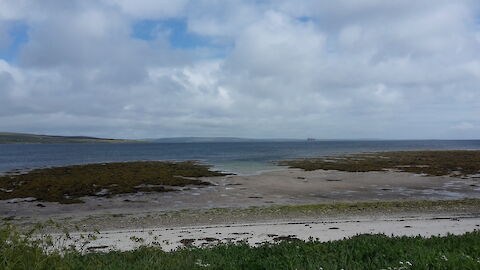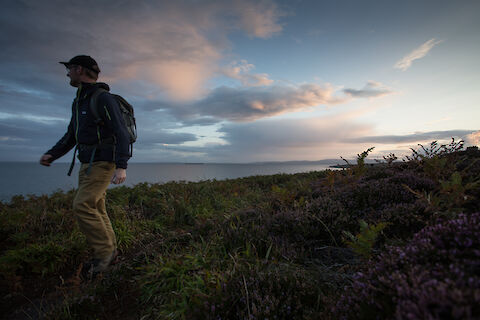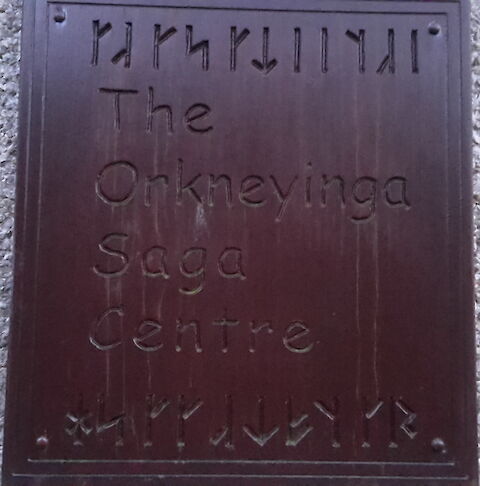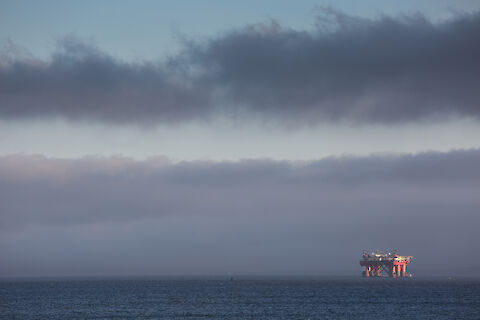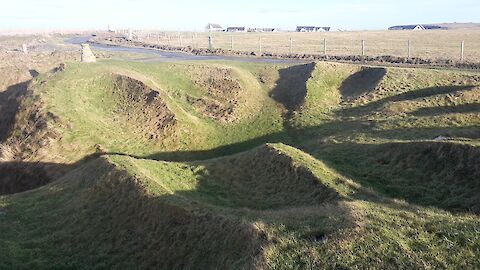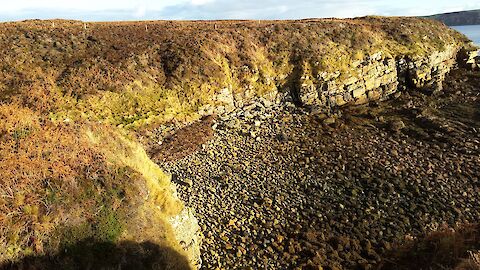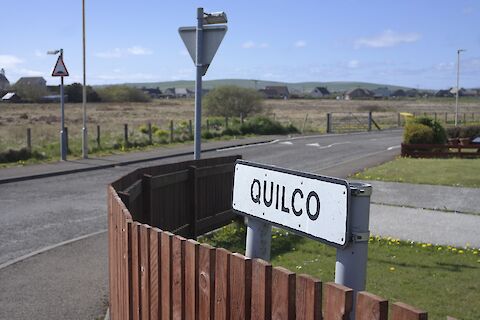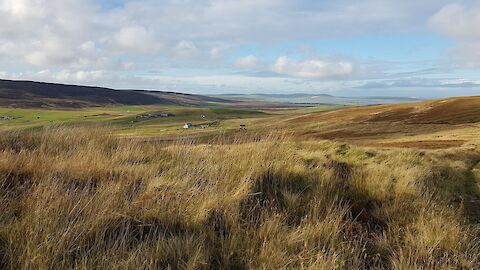Here you can find the resources we are developing for the journey. Many of these are linked to the smartphone app.
Downloadable GPX file of Evie to Birsay route for use with mapping applications, including Ordnance Survey
Advice for walking the route
Mansie stones mark resting stones where Magnus's body was laid. The first resting place is a green mound in Evie and is the likely landing place of the body. It may or may not be the Broch of Gurness - listen on to hear more about this.
Historical information about Gurness
Using stones as an aid for reflection as you walk
Using stones as an aid for reflection as you walk
A poem to start the pilgrimage
A poem to start the pilgrimage
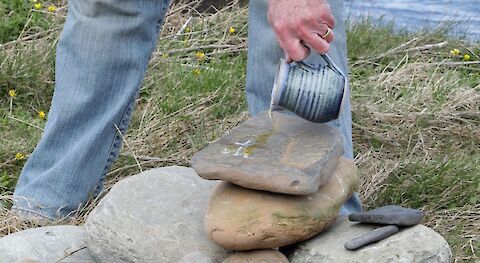
Photograph of the stone cairn at the start of the mainland pilgrimage
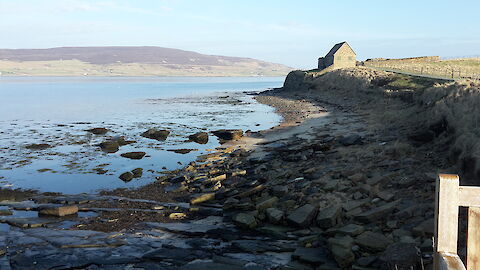
Photograph of the view to the east from Gurness
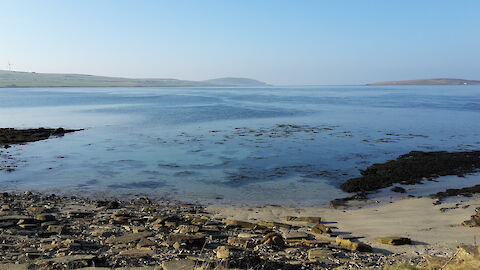
Photograph of the view to the west from Gurness, taken from the beach
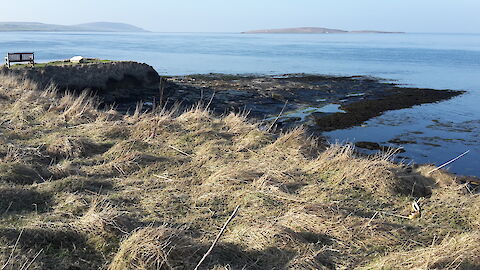
Photograph of the view to the west from Gurness
Excerpt from the Magnus Saga on the death of Magnus
Excerpt from the Magnus Saga on the death of Magnus
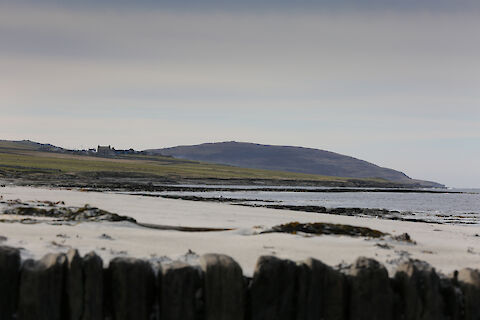
Photograph looking west from Aikerness to Costa
Historical information about Evie Old Parish Church and cemetery
Historical information about Evie Old Parish Church and cemetery
Historical information about the Knowe of Stenso
Historical information about the Knowe of Stenso
An overview of the island of Eynhallow
An overview of the island of Eynhallow
Reflection on the understanding of creation in the twelfth century
Reflection on the understanding of creation in the twelfth century
Audio file unavailable.
Historical information about St Peter's Kirk in Costa
Historical information about St Peter's Kirk in Costa
Reflection on what happens when faith falls apart
Audio file unavailable.
Reflection on the experience of faith falling apart.
Audio file unavailable.
Historical information about Chrismo
Historical information about Chrismo
Historical information about the Mans Stane at Loch of Swannay
Historical information about the Mans Stane at Loch of Swannay
Reflection on the importance of sight lines in medieval times
Audio file unavailable.
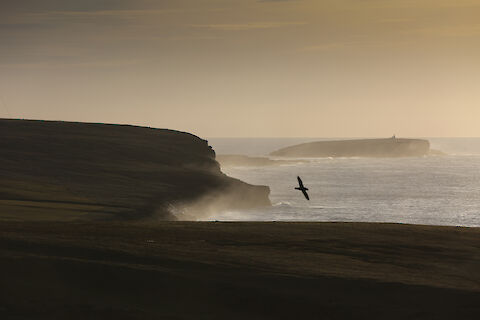
Photograph of the view from Costa towards Birsay
Poetry cycle by George Mackay Brown
Reflection on the storms that destroyed the bridge, twice
Audio file unavailable.
Reflection on the storms that destroyed the bridge, twice
Historical information about the Mans Stane at Knowe of Lingro
Historical information about the Mans Stane at Knowes of Lingro
Historical information about the Mans Stanes at Northside in Birsay
Historical information about the Mans Stanes at Northside in Birsay
Historical information about St Magnus Church, Birsay
Historical information about St Magnus Church, Birsay
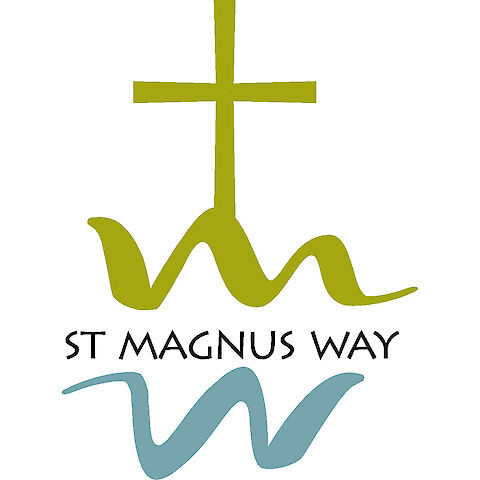
Logo of the St Magnus Way, copyright Orkney Pilgrimage
Instrumental music
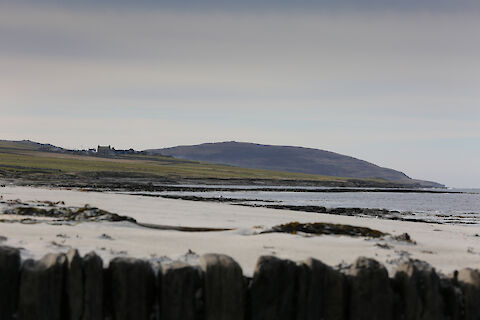
Looking west across Aikerness to Costa Hill.
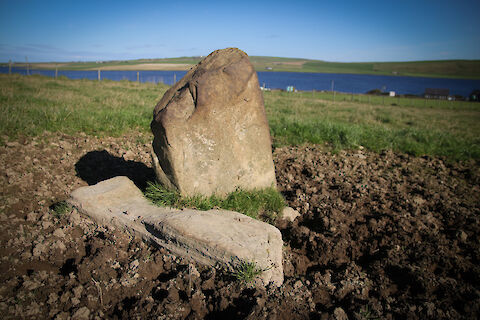
The Mansie Stane at Strathyre
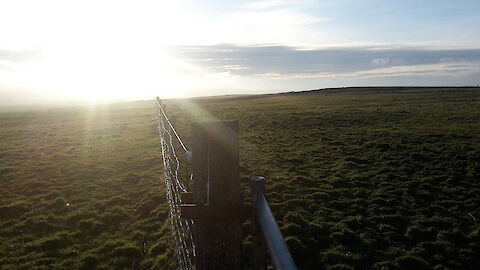
Above Kingshouse, looking West
Downloadable GPX file of the route around Egilsay for use with mapping applications, including Ordnance Survey.
A description of the route around the island of Egilsay
Map of the route of the second section of the St Magnus Way, from Birsay to Dounby.
Historical information about the Mans Well in Birsay.
Historical information about the Mans Stone at Strathyre
Historical information about Twatt Church, Birsay
Historical information about Wheebin Standing Stone.
Historical information about Kirbuster.
Historical information about Saevar Howe.
Historical information about Housby
Historical information about Greenay
Historical information about Birsay.
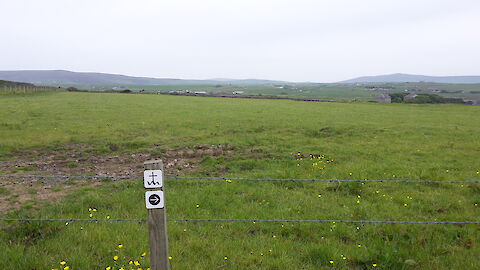
View from North Bigging towards Kingshouse
Audio recording of historical information about Kingshouse, Harray, where an unknown mound (visible to the southeast of North Bigging) is traditionally associated with a resting place of St Magnus.
Audio recording of historical information about the Knowes of Conyar, also known as St Magnus's Resting Place.
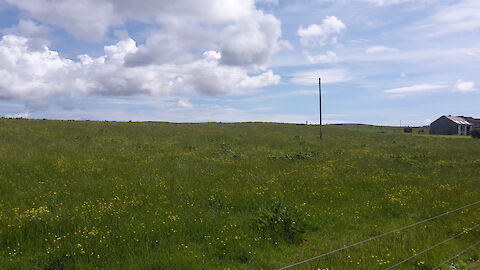
VIew of the Knowes of Conyar from the Old Drover's Track
Audio recording of historical information about St Michael's Kirk in Harray.
Audio recording of historical information about Appiehouse as a possible resting point.
There is a rich Magnus tradition associated with an 8ft high standing stone on the top of Stoney Hill in Harray. This prehistoric stone, is the only remaining stone from a stone circle that once dominated the skyline.
There are two places in the south corner of Harray which have been suggested as resting places of Magnus: A mound called Howinawheel on the land of Winksetter and a stone at or near The Refuge. There is about a mile distance between these two places and the traditions for both rely on place-name evidence.
A small artificial island in the Loch of Wasdale (in the parish of Firth), once reached by means of submerged stepping stones, is the site of a chapel. This chapel, for which no dedication survives, has no associated burial ground, which is unusual.
The first Magnus resting place in Firth was thought to be a mound ‘somewhat to the west of Finstown with a standing stone on top’.
An interesting tradition concerning a Mans Stane in the heart of Finstown.
The name Whilcoe, now Quilco and the name of a housing estate, referred at the end of the nineteenth century to a boundary stone marking the three parishes of Birsay, Harray and Sandwick.
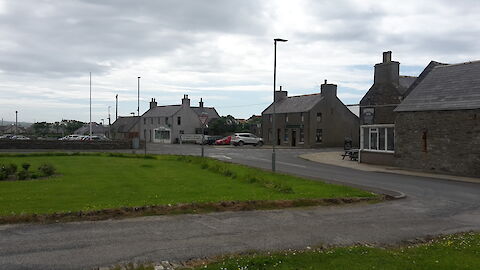
View of Dounby crossroads from the picnic tables opposite the Smithfield Hotel.
There are various traditions associated with the transportation of that Magnus’s shrine through the parish of Harray on the way from Birsay to Kirkwall.
Reflection on the heart as we journey to the heart of the Mainland.
Poem located at the Harray Loch.
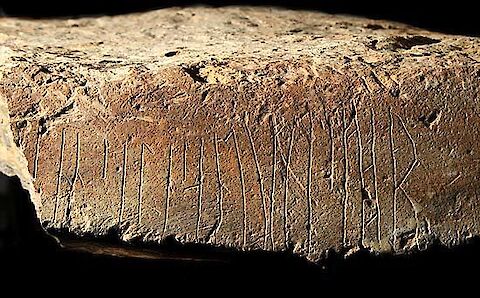
Close up of runestone inscription. Image © www.theorcadianphotos.co.uk
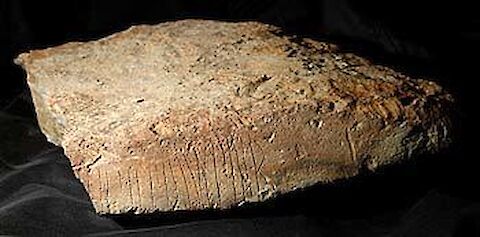
The Naversdale Runestone Image © www.theorcadianphotos.co.uk
Historical information about the Naversdale Runestone, discovered in 2013.
Historical information about the island of Damsay in the Bay of Firth.
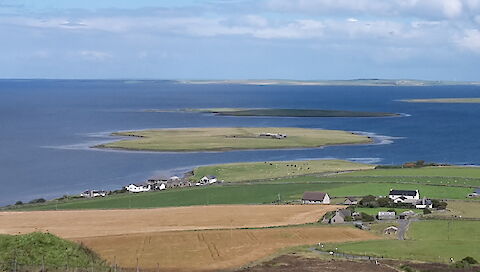
Photo of Damsay with the Holm of Grimbister in front.
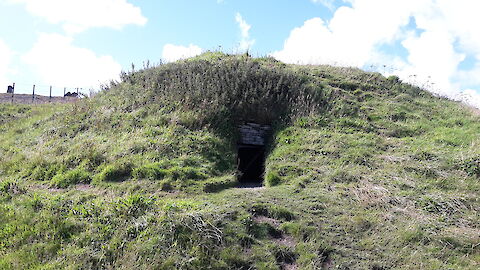
Photo of Cuween tomb.
Historical information about the Earl's Bu and Round Kirk in Orphir.
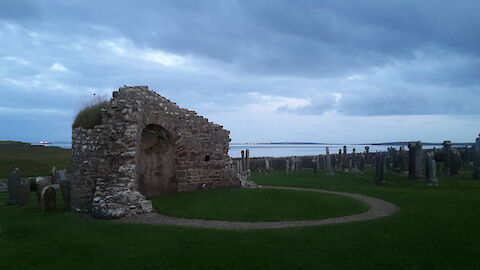
Photo of the Round Kirk at Orphir.
Historical information about the house of Oback.
Historical information about the Earl's Bu and Round Kirk in Orphir.
Description of the route from Finstown to Orphir.
Description of the route from Dounby to Finstown
Description of the route from Birsay to Dounby
Description of the route from Evie to Birsay.
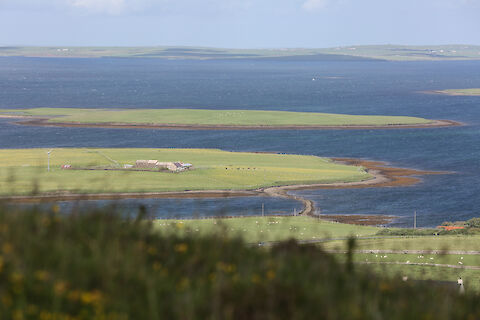
Photograph of Firth Bay, with the Holm of Grimbister and Damsay beyond it.
A draft response to Orkney Island Council's core path consultation which closes on the 28th August.
Pdf version of the draft core path response.
Historical information on how the bones of Magnus came to be in the Cathedral, were thought lost after the Reformation and then rediscovered in the 1920s.
Historical information about St Olaf's Kirk, where Magnus's bones were brought to from Birsay before the Cathedral was ready.
Historical information about St Magnus Cathedral.
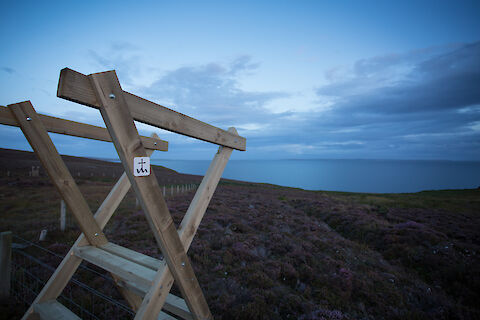
Photograph of the steps below Hobbister.
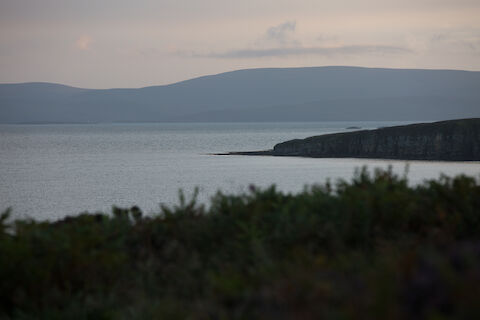
Photograph of Waulkmill and Scapa Flow.
Poem on the effort of moving through landscape.
Poem on how the St Magnus Way does not need to be declared open, written for the launch of the final section.
Description of the route from Orphir to Kirkwall
Downloadable GPX file of Birsay to Dounby route for use with mapping applications, including Ordnance Survey.
Downloadable GPX file of Dounby to Finstown route for use with mapping applications, including Ordnance Survey.
Downloadable GPX file of Finstown to Orphir route for use with mapping applications, including Ordnance Survey.
Downloadable GPX file of Orphir to Kirkwall route for use with mapping applications, including Ordnance Survey.
Map of the route from Dounby to Finstown
Map of the route from Finstown to Orphir
Map of the route from Orphir to Kirkwall.
Our first set of accounts and annual report, covering the period 23 November 2016 to 31 December 2017.
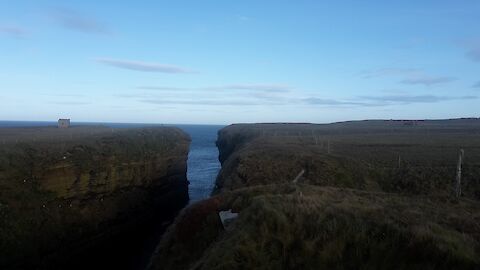
Photo of the geo at Grip east of Whitaloo Point.
Our theme for the site of Magnus’s murder is peace, reflecting on the peace that his death secured, the enduring peace in the islands and, at the same time, the things which disrupt peace here and elsewhere, in us and around us.
Our theme for this stage is Loss – reflecting on the death of Magnus, the loss of a son for his mother Thora and our own stories of loss.
Our theme for this stage of the journey is Growth – reflecting on the growth of the cult of Magnus in the years following his death and in the shifting base of power from West to East in Orkney, as well as in our own stories of growth.
The theme for this stage is Change – reflecting on the changing landscape and ways of life over the centuries as well as our own often conflicting attitudes to change as something both welcomed and feared.
Our theme for this stage is Forgiveness – reflecting on whether Hakon was sorry for the murder of Magnus, and our own need to both receive and extend forgiveness.
Our theme for this final stage is Hospitality – reflecting on the place of feasting then and now, as well as the place of welcome afforded Magnus in Kirkwall, and the reception we ourselves anticipate.
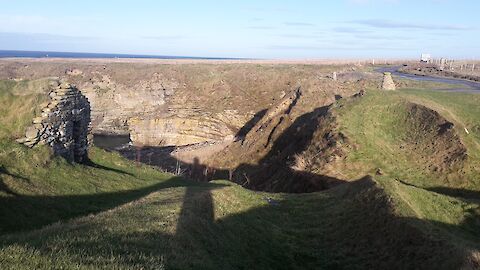
Looking back across the fisherman's hut towards Northside.
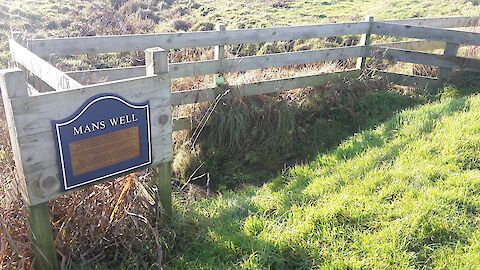
Site of the Mans Well, restored by Birsay Heritage Trust in 2012.
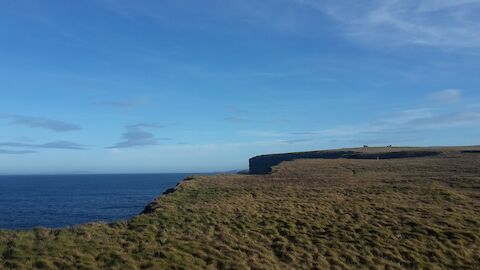
Looking northeast from Grip Geo.
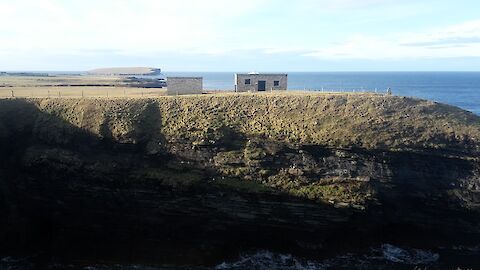
Looking west to Whitaloo Point.
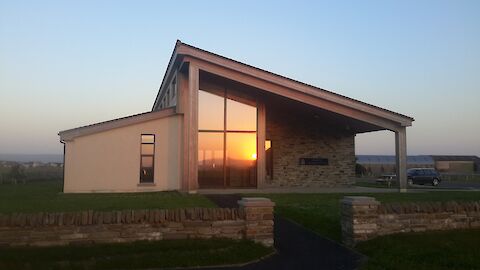
Sunset reflected in Milestone Community Church.
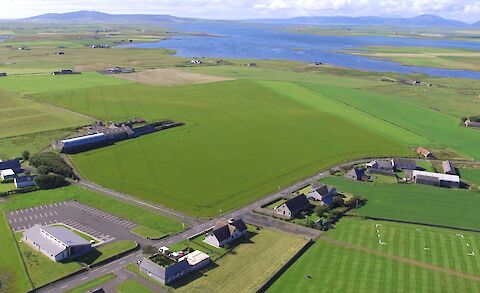
Image of Milestone Community Church (bottom left) from above.
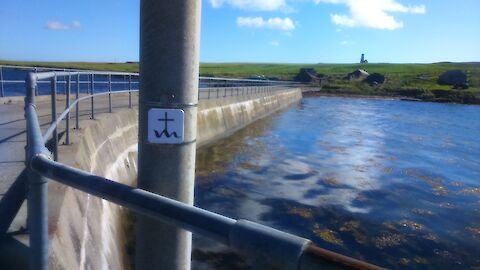
View of Egilsay Pier with St Magnus Church on the skyline.
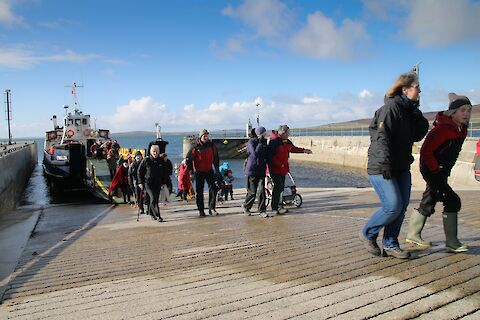
Pilgrims disembarking from the MV Eynhallow at Egilsay.
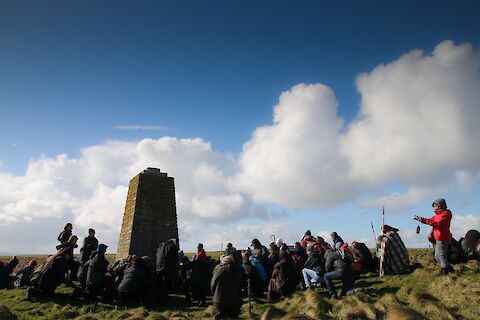
Pilgrims kneeling in honour of Magnus on the 900th anniversary of his death.
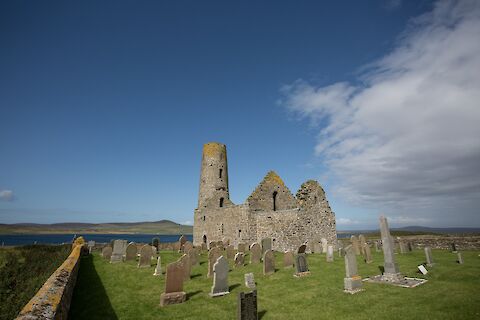
View of St Magnus Egilsay and graveyard, looking across to Rousay.
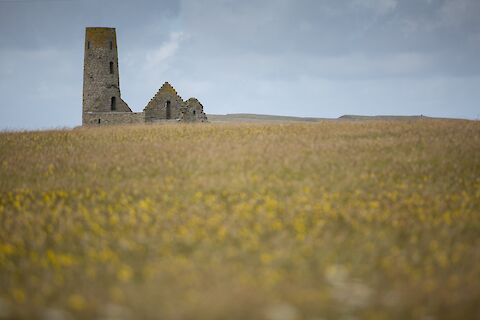
St Magnus Church, Egilsay across a field of summer flowers.
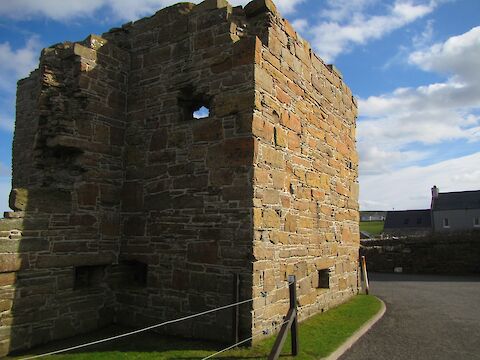
Earls Palace, Birsay, from the road as you walk in to the Palace.
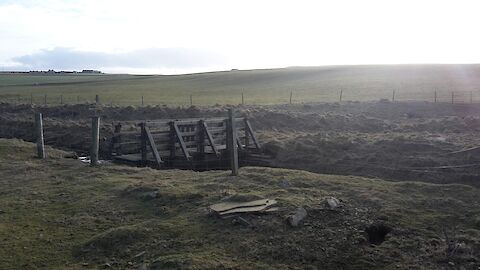
Bridge over the Burn of Swannay
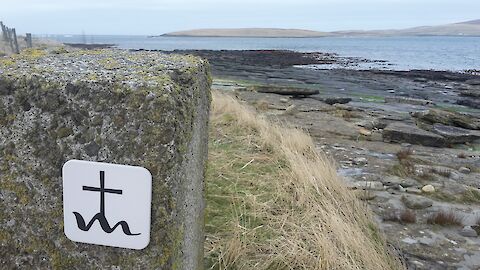
Looking from the coast across to Eynhyallow before the track turns up to the road again.
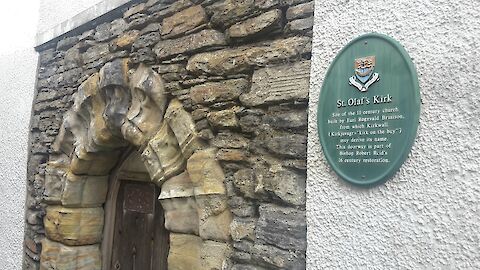
Photograph of the site of St Olaf's Kirk, from the 11th century, with part of the 16th century restoration.
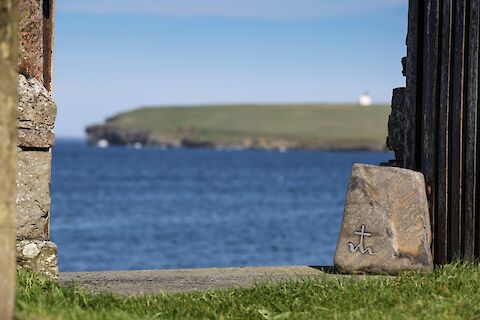
View of the Brough of Birsay from St Magnus Church.
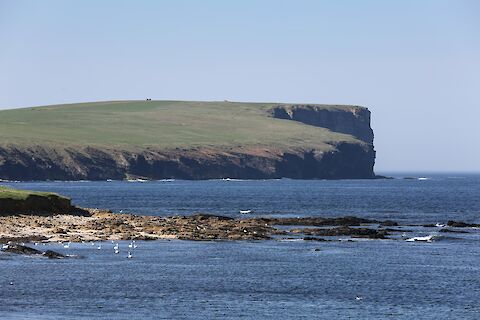
View of the Brough of Birsay from the Northside coast.
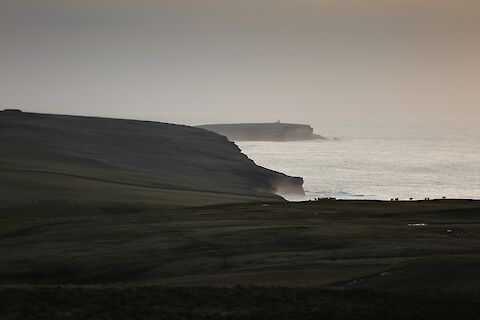
View of the Brough of Birsay from the summit of Costa Hill.
Birsay, the ancient capital of Orkney was the residence of Earl Thorfinn the Mighty. Listen to find out more.
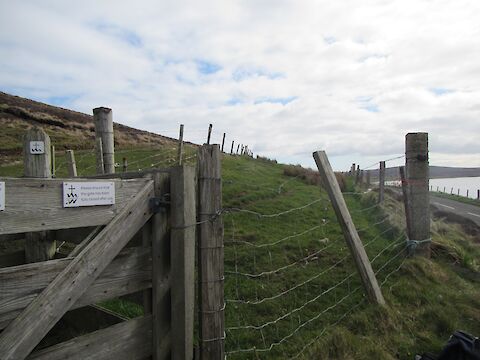
Photo of Gate leading to Costa Hill from the Loch of Swannay.
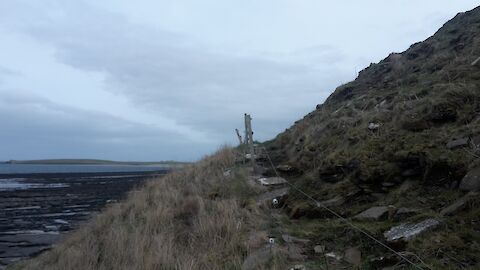
Photo of the Knowe of Stenso, a possible broch site.
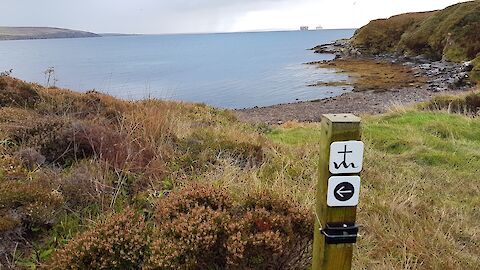
Picture of Hesti Geo
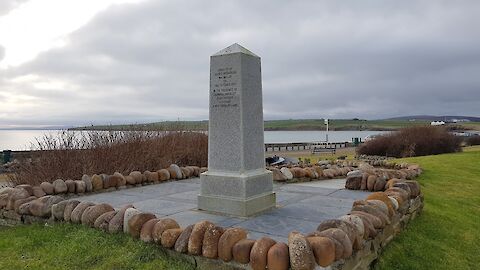
Picture of the Royal Oak Memorial
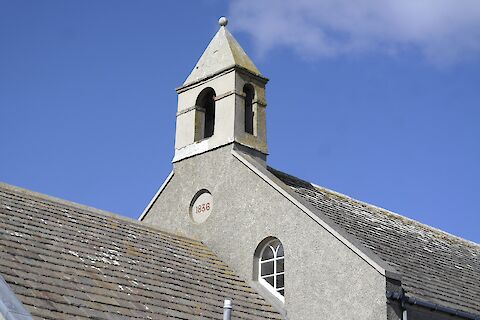
Photograph of St Michael's Church
Our annual report for 2019 detailing our achievements, our finances and our digital performance.
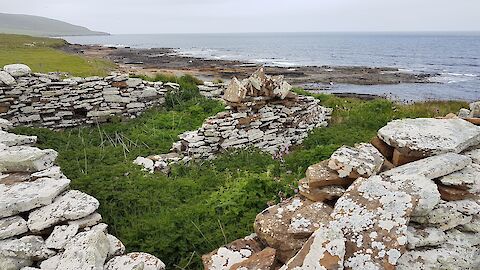
A picture of the ruined Peter's Kirk at Urrigar in Costa.
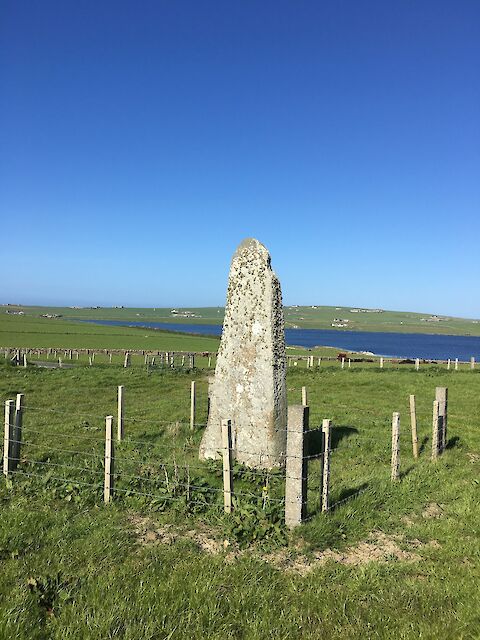
Picture of Wheebin
A reflection on our theme for this section, Loss at the end of a day's pilgrimage from Evie to Birsay.
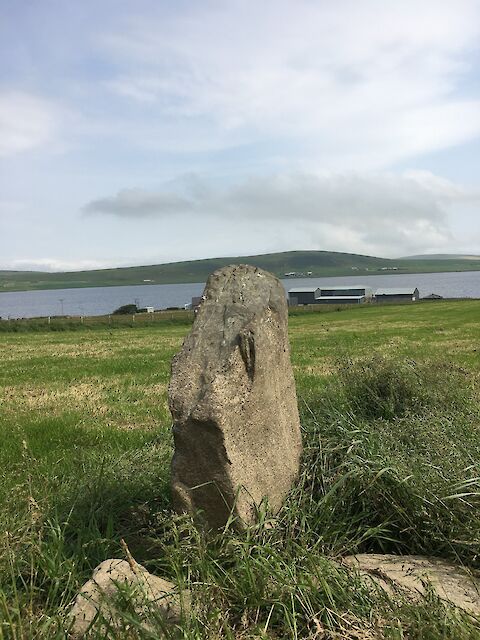
A photograph of the Mans Stane at Strathyre.
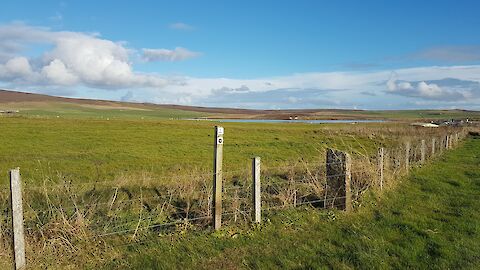
Photograph of Kirbister, Orphir.
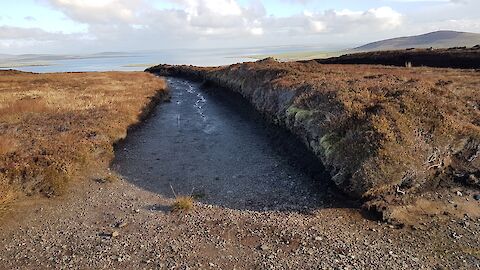
Photograph of Lyradale.
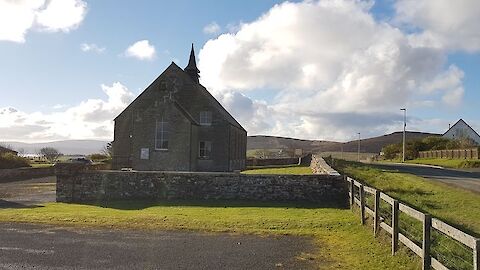
A photograph of Orphir Kirk.
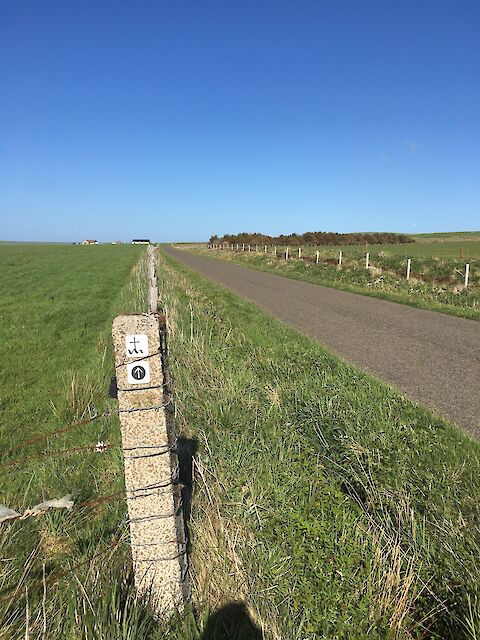
Photograph of Kirbuster Waypoint.
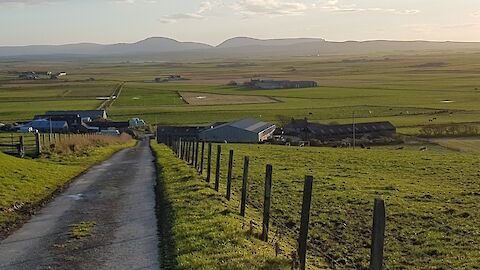
Photograph of the Midhouse Waypoint.
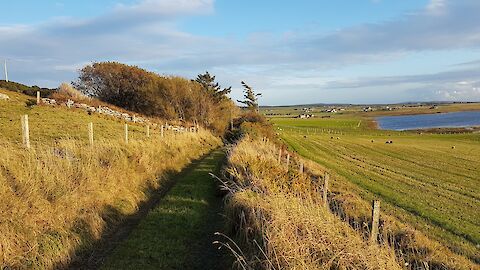
Photo of Nether Fea.
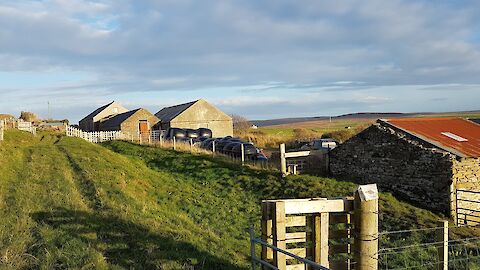
Photograph of Cloke Waypoint.
A short overview of Birsay's significance as the seat of the Earls of Orkney up until the death and reinterment of St Magnus in the 12th century.
A short overview of the historical significance of the Mans Stones and the Strathyre stone in particular.
An overview of the origins of Kirbuster as derived from its etymology and historical location.
Annual Report for 2022
A reflection at Midhouse by Allan McCafferty.
An imaginative piece from the perspective of a medieval pilgrim approaching the Brough of Birsay by Graeme Brown.
Annual Report for 2020.
Online Report for 2020
Description and history of the St Magnus Church, Egilsay
Annual Report for 2021.
The story of St Nicolas Kirk, the 'Roond Kirk' in Orphir
More information about St Magnus
Earl Hakon, a poem by George Mackay Brown from a series of seven poems in his book 'Tryst on Egilsay'.
Helmsman, a poem by George Mackay Brown from a series of seven poems in his book 'Tryst on Egilsay'.
The Killers, a poem by George Mackay Brown from a series of seven poems in his book 'Tryst on Egilsay'.
Death of Magnus, a poem by George Mackay Brown from a series of seven poems in his book 'Tryst on Egilsay'.
Egilsay Priest, a poem by George Mackay Brown from a series of seven poems in his book 'Tryst on Egilsay'.
Egilsay Soldier, a poem by George Mackay Brown from a series of seven poems in his book 'Tryst on Egilsay'.
Two Tinkers, a poem by George Mackay Brown from a series of seven poems in his book 'Tryst on Egilsay'.
SMW Annual report and accounts 2024
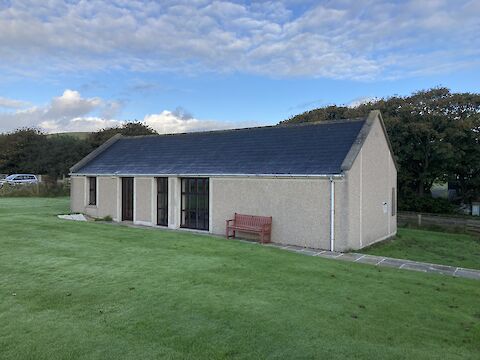
The Orkneying Saga Centre, Orphir
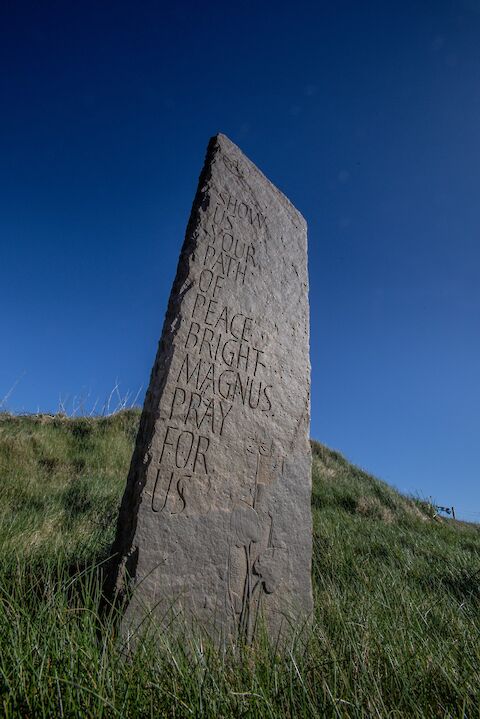
The marker stone at the start of the St Magnus Way
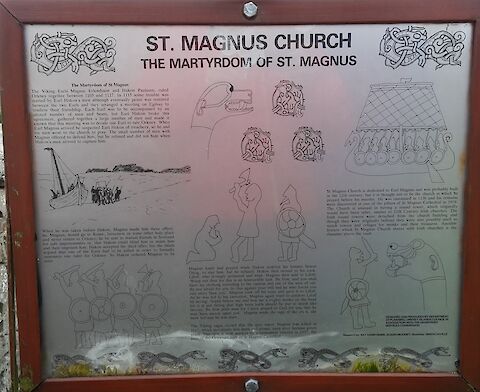
St Magnus Kirk, Egilsay information sign
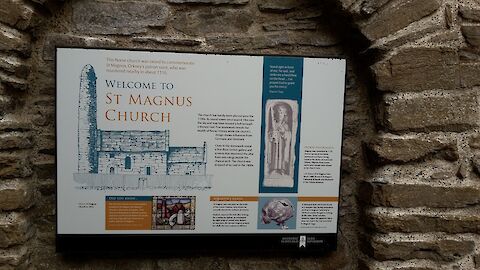
St Magnus Church Egilsay Welcome sign
